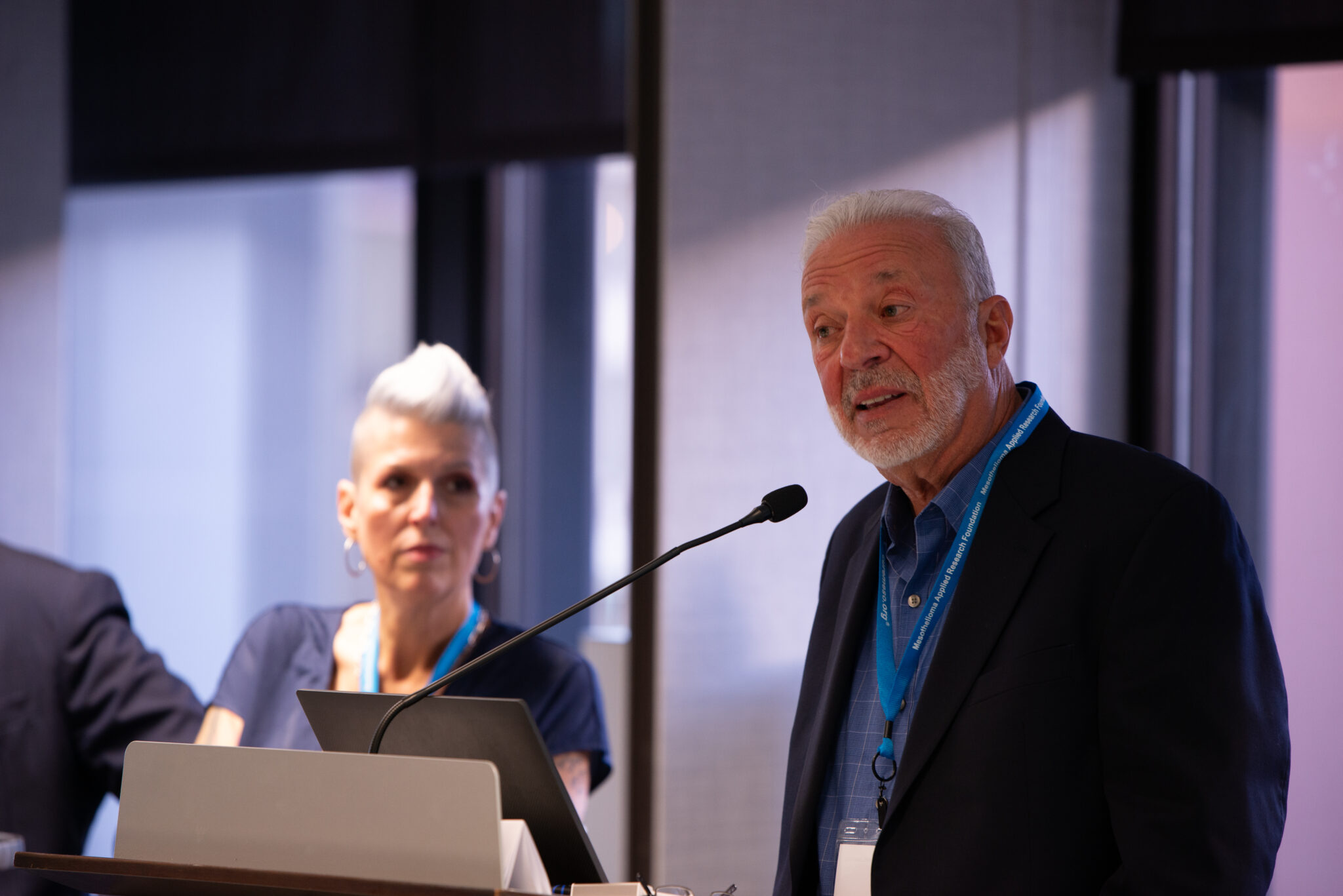This week, the paper “Medical and surgical care of mesothelioma patients and their relatives carrying germline BAP1 mutations,” by Drs. Michele Carbone, Harvey Pass, and colleagues, has been published in the Journal of Thoracic Oncology. This paper is the first of its kind addressing surveillance and treatment guidance and considerations for this specific group of patients.
The relatively recent discovery of the inherited BAP1 mutation in patients with mesothelioma has led scientists to study its implications on various aspects of disease progression and management, including a close look at how it impacts survival. For some time, literature has shown a significant improvement in survival of these individuals, which is remarkable because until recently, mesothelioma was considered inevitably fatal.
“Now we know that there is a fraction of patients, those who carry germline BAP1 and some other mutations, who actually live 10-20 years and probably will not die of mesothelioma,” said Dr. Michele Carbone, the lead author of this study.
Survival considerations
As already reported in literature, one-third of BAP1 germline mutation carriers develop 2-7 cancers during their lifetime, with mesotheliomas being one of those. Conversely, approximately 10-12% of patients with mesothelioma have this inherited mutation. It is important to outline that an inherited BAP1 mutation confers very different characteristics of disease development and progression when compared to a somatic, or acquired, BAP1 mutation. For instance, the significant improvement in survival does not apply to those patients with an acquired (rather than inherited) mutation.
Screening
Considering the high risk of developing cancers among BAP1 germline mutation carriers, screening can be life-saving.
However, a cost vs. benefit analysis of testing must be performed to avoid excess radiation or other invasive procedures. A clinical trial is now underway at the NCI (National Cancer Institute) to assess the effectiveness of surveillance via CT scans in individuals with the BAP1 inherited mutation (germline) who are 30 years old or older. However, there is currently no surveillance standard for mesothelioma. Two other clinical trials now open also at the NCI are studying the natural history of patients and their families who carry this mutation with a secondary objective of defining mesothelioma risk.
“These two NCI trials will teach us the best approach to treat mesothelioma in carriers of BAP1 mutations,” commented Dr. Carbone.
He added that the understanding we will acquire through these studies will save lives, as these patients often die because they develop additional cancers, mostly eye and skin melanomas and renal cell carcinomas.
“These cancers can be cured by surgical resection when detected at an early stage, and the protocol at the NCI focuses on early detection,” he added.
Therapeutic applications in mesothelioma
The article outlines several ways in which the knowledge of a germline BAP1 mutation in a patient is therapeutically actionable.
- BAP1 mutation status has been found to be a good prognosticator of efficacy of platinum-based chemotherapies such as cisplatin.
- PARP inhibiting drugs such as Olaparib have been found ineffective in patients with germline BAP1 mutations.
- In a study of durvalumab in combination with pemetrexed (Alimta) and a platinum (such as cisplatin or carboplatin), patients with germline BAP1 mutations achieved significantly longer progression-free survival and overall survival.
For Dr. Carbone, the most exciting side of this newly acquired knowledge is that carriers of BAP1 mutations are able to “fight” mesothelioma and survive for many years.
“We are studying how they do so: if we figure out how they fight mesothelioma — and we will if we get enough support — we shall be able to make therapies “to teach” all patients how to fight mesothelioma,” said Dr. Carbone.
“Once we achieve that, I will retire, happy,” he added





